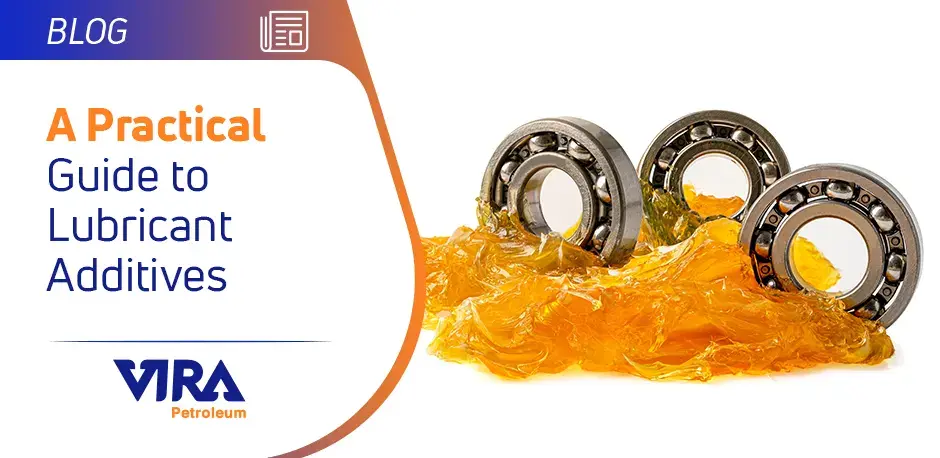Understanding the full potential of lubricants goes beyond simply knowing their base oil viscosity. Although viscosity is crucial, additives also play a significant role in a lubricant’s overall performance. Additives are chemical substances added to the base stock to enhance its properties and improve its overall reliability and quality. Typically, they represent between 0.1 to 30 percent of the oil volume, depending on the machine. If you want to know more about lubricant additives, including the types and functions of different additives, you can refer to our ultimate guide.
Order : recycle base oil
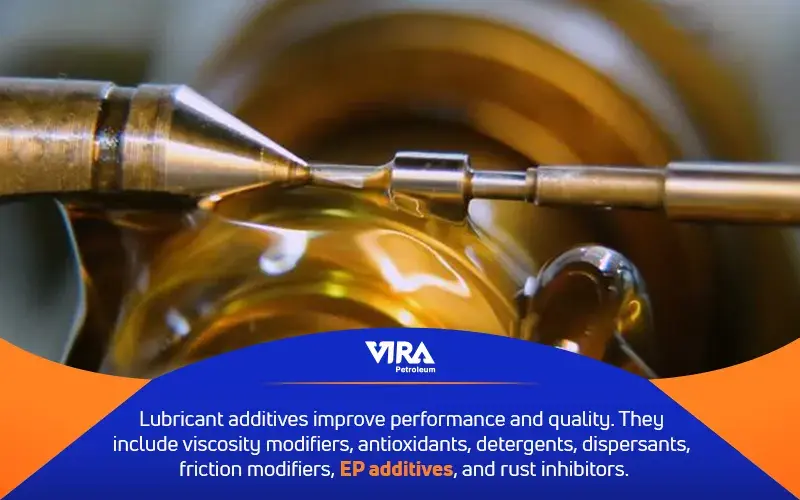
What Are Lubricant Additives?
Lubricant additives are substances that are added to lubricating oils to improve their performance, reliability, and quality. The additive content in lubricating oils can range from just a few parts per million to several percentage points, depending on the function that the additives develop. Depending on their intended function, additives can be classified into the following types:
Viscosity index modifiers and pour point improvers, which aim to enhance the intrinsic characteristics of the base oils.
Antioxidants, which help protect the lubricant from oxidation and degradation.
Detergents, dispersants, friction modifiers, anti-wear/Extreme Pressure (EP) additives, rust and corrosion inhibitors, which add new properties to the base oil and protect metal surfaces in engines.
Key Functions of Additives in Lubricants
Additives play a crucial role in enhancing the performance of base oils. They can enhance existing properties of base oils with antioxidants, corrosion inhibitors, anti-foam agents, and demulsifying agents. Additionally, additives can also suppress undesirable base oil properties through pour-point depressants and viscosity index (VI) improvers. Moreover, they can impart new properties to base oils with extreme pressure (EP) additives, detergents, metal deactivators, and tackiness agents. Additives usually constitute up to 30% of the finished oil formula, depending on factors such as the working environment, machine type, and primary purpose of the lubricant. Based on the role they play in the lubricating oil formula, additives can enhance existing properties, reduce unwanted features, or add new characteristics to base oils.
related topic : Base oil and additives
Three Primary Roles of Additives in Lubricating Oil
The roles and functions of lubricant additives are as follows:
- Enhance existing base oil properties with:
- Antioxidants
- Corrosion inhibitors
- Anti-foam agents
- Demulsifying agents
- Suppress undesirable base oil properties with:
- Pour-point depressants
- Viscosity index (VI) improvers
- Impart new properties to base oils with:
- Extreme pressure (EP) additives
- Detergents
- Metal deactivators
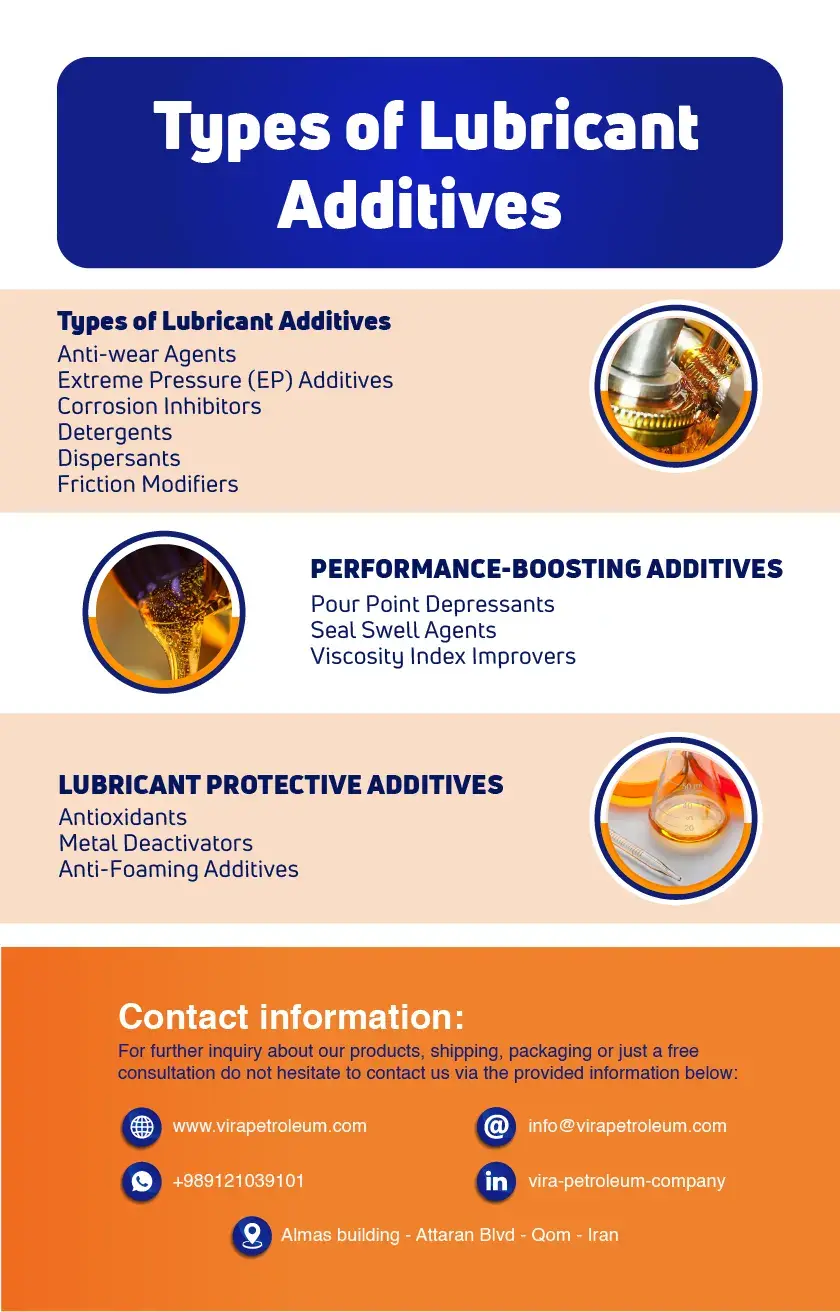
Types of Lubricant Additives
Lubricant additives play an important role in enhancing the properties of base oils. There are many different types of lubricant additives, including rust inhibitors, antioxidants, and viscosity improvers. These additives are divided into three categories based on their functions: surface-protective, performance-boosting, and lubricant-protective. The amount of additives used in lubricating oils can range from 0.1 to 30 percent, depending on the desired application. Creating the proper mix of additives is a complex and expensive process, but it is crucial in differentiating between various types of lubricants such as turbine (R&O) oil, hydraulic oil, gear oil, and engine oil. Additives are chosen based on their ability to perform their intended function, as well as their compatibility with other additives and cost-effectiveness. While some additives work within the body of the oil (e.g., anti-oxidants), others work on the surface of the metal (e.g., anti-wear additives and rust inhibitors). Let’s explore each category in more detail.
related topic : lubrication systems
SURFACE PROTECTIVE ADDITIVES
Surface protective additives, as their name implies, serve to safeguard the metal surfaces of engines by providing a layer of protection. These additives can include anti-wear agents, anti-corrosion additives, detergents, dispersants, and friction modifiers.
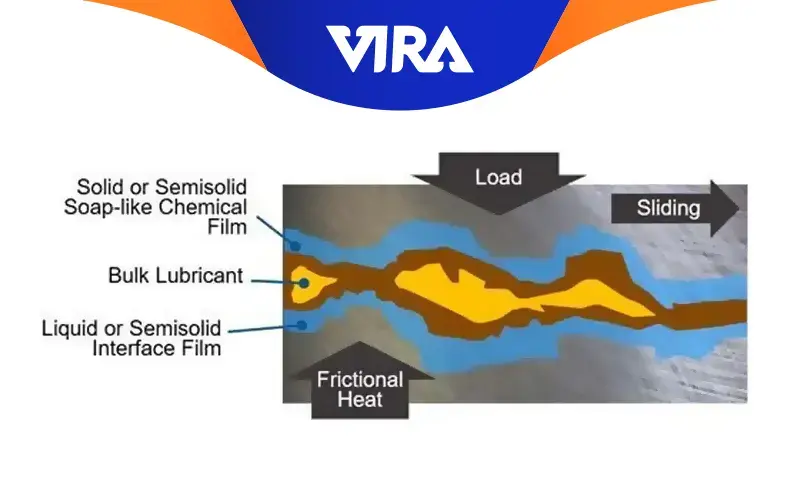
Anti-wear Agents
There are several types of mechanical wear that can occur in lubricating systems, such as adhesive wear, abrasive wear, pitting, and spalling. Anti-wear agents are designed to protect loaded metal parts from wear and tear, and they are polar additives that attach to frictional metal surfaces and react chemically during metal-to-metal contact. These additives are typically phosphorus compounds, with zinc dialkyldithiophosphate (ZDDP) being the most common. Different versions of ZDDP are used in hydraulic oils and engine oils, and they also have anti-oxidant and anti-rust features. When activated by the heat of contact, anti-wear agents create a protective film that minimizes wear and helps protect the base oil from oxidation and the metal from damage by corrosive acids. Over time, these additives degrade, and when they become “used up,” adhesive wear damage can increase.
Extreme Pressure (EP) Additives
Compared to AW additives, these additives are more chemically aggressive. They chemically react with metal surfaces, particularly iron, to form a surface film that sacrifices itself, preventing the welding and seizure of opposing asperities due to metal-to-metal contact (adhesive wear).
EP additives are activated at high loads and high contact temperatures. They are often present in gear oils, which give them their distinctive sulfur smell. Typically, these additives contain sulfur and phosphorus compounds, and sometimes boron compounds. However, they can be corrosive to yellow metals, particularly at higher temperatures, and should not be used in applications where copper-based metals are utilized, such as worm gears. Chlorine-based EP additives exist but are seldom used due to corrosion issues.
Anti-wear additives and extreme pressure agents belong to a large group of chemical additives that protect metal surfaces during boundary lubrication. They create a protective film or barrier on the wear surfaces, as long as the hydrodynamic or elastohydrodynamic oil film is retained between the metal surfaces.
These boundary lubrication additives are not required to carry out their function if there is no boundary lubrication, and the oil film is maintained. However, if the oil film breaks down and asperity contact is made under high loads or high temperatures, these additives protect the wearing surfaces.
read more : Applications of Base Oil
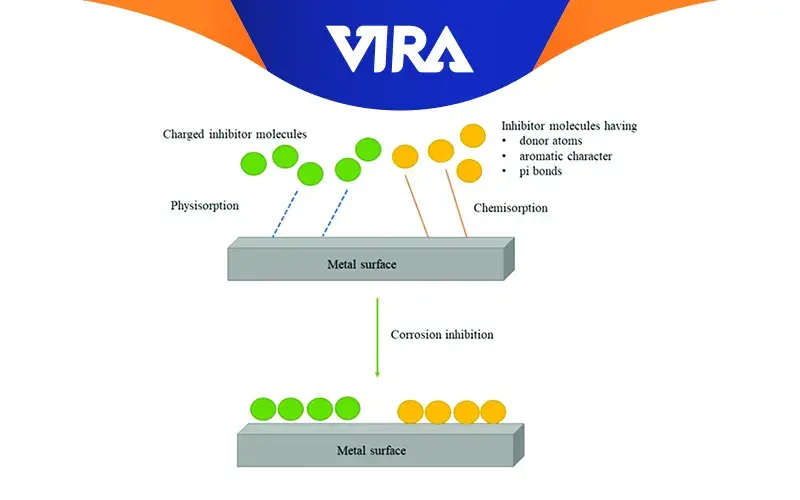
Corrosion Inhibitors
Corrosion is a gradual process that can weaken and change the properties of metal surfaces due to chemical or electrochemical reactions with their surroundings. For non-noble, ferrous metals, it represents a constant threat. Rust and corrosion inhibitors play a critical role in preventing this damage by adding chemical compounds to the lubricant that create a protective barrier and neutralize acids. Passivation :
They can passivate the surface of the metal, preventing it from interacting with water or air.
Neutralization:
Corrosion inhibitors are additives that work by neutralizing corrosive substances. One example of this is carboxylic acids, which can bind to metal surfaces and neutralize alkaline compounds that may be present.
These inhibitors are ubiquitous in various industrial settings, as well as in almost all lubricating oils and greases. Different formulas serve as corrosion protection agents depending on the equipment and working environment.
Zinc dialkyl dithiophosphate (ZDDP) is a powerful anti-wear additive and an effective corrosion inhibitor. In addition, some inhibitors are specific to certain metals, and an oil may contain multiple corrosion inhibitors. Metal deactivators are another type of corrosion inhibitor.
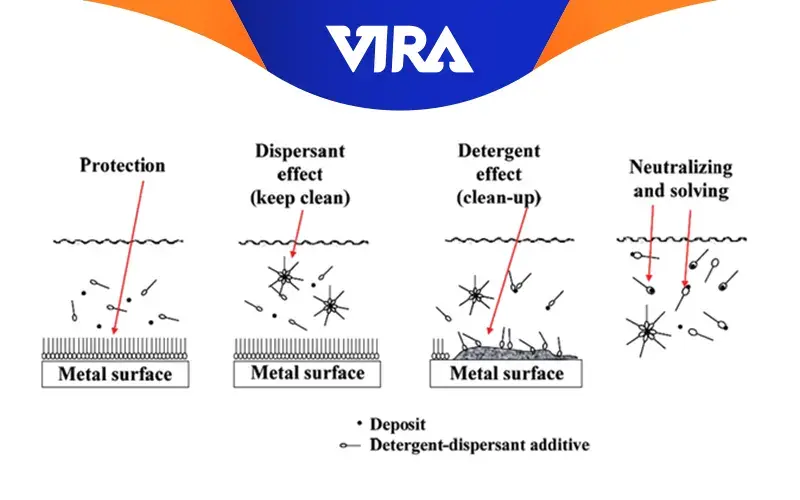
Detergents
Detergents are a type of multipurpose additive that play important roles in lubrication systems. They are often used alongside dispersants and can be alkaline or basic. These metal compounds consist of calcium or magnesium, as well as phosphates and sulfonates, but barium-based detergents are rarely used nowadays. Detergents help to keep hot metal components clean and neutralize acids that form in the oil. They are primarily used in engine oils and form the reserve alkalinity, also known as the base number (BN), of the oil. However, the metal compounds in detergents can leave ash deposits when the oil is burned, which may form unwanted residue at high temperatures. To address this issue, many equipment manufacturers request low-ash oils for high-temperature applications. It is common for a detergent additive to be used together with a dispersant additive.
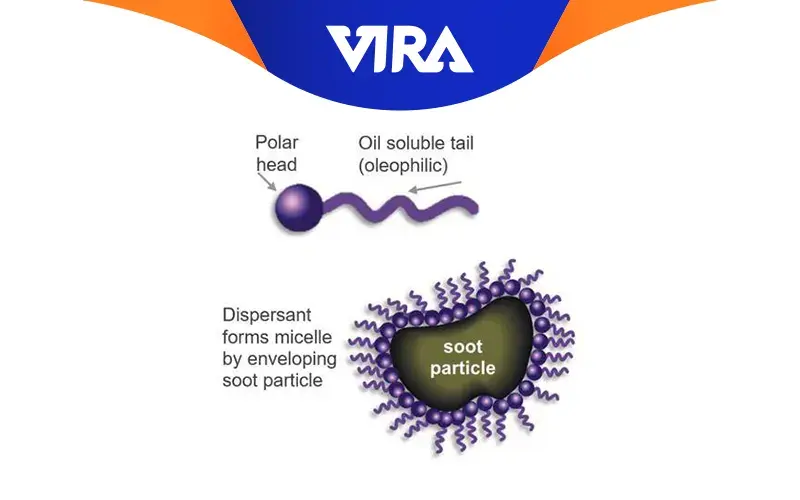
Dispersants
Dispersants are often used in conjunction with detergents in motor oils to keep engines clean and free of deposits. Their main function is to keep insoluble particles of diesel engine soot finely dispersed or suspended in the lubricating oil, which helps to minimize damage and allows the contaminants to be carried out of the engine during an oil change. Dispersants are typically organic and ashless, such as polymeric alkylthiophosphonates and alkylsuccinimides. When used together, the combination of detergent and dispersant additives can neutralize more acid compounds and keep more contaminant particles suspended. It’s important to note that these additives will eventually exceed their capacity, which will require an oil change. Additionally, since dispersants are organic and ashless, they are not easily detectable with conventional oil analysis.
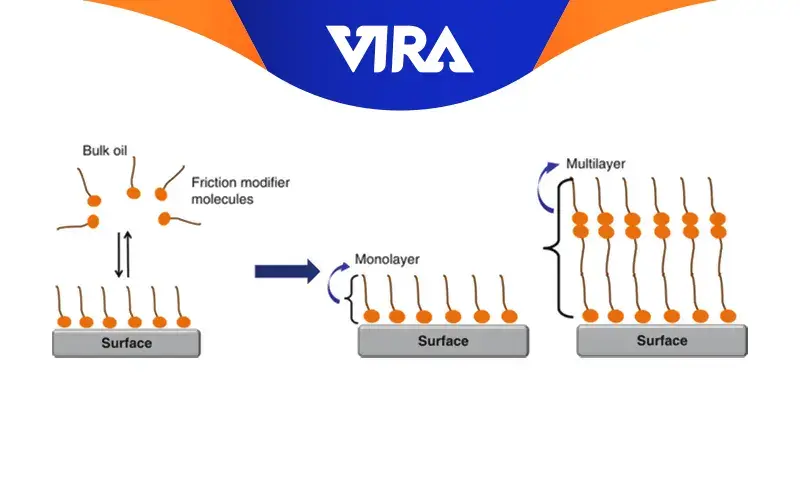
Friction Modifiers
well suited for extreme pressure conditions. They are usually long-chain organic compounds, such as fatty acids, esters, and amides, and can help to reduce wear on the engine parts.
Friction modifiers are essential for improving the overall efficiency and performance of engines and transmissions. In the case of engines, reducing friction means less energy is required to overcome the resistance between parts, resulting in improved fuel economy. In transmissions, better engagement of clutch materials leads to smoother shifting and better overall performance. It is important to note that friction modifiers are not designed to withstand extreme pressure conditions, as they are intended for lower loads.
PERFORMANCE-BOOSTING ADDITIVES
PERFORMANCE-BOOSTING ADDITIVES
These additives serve to improve the existing properties of the lubricating oil.
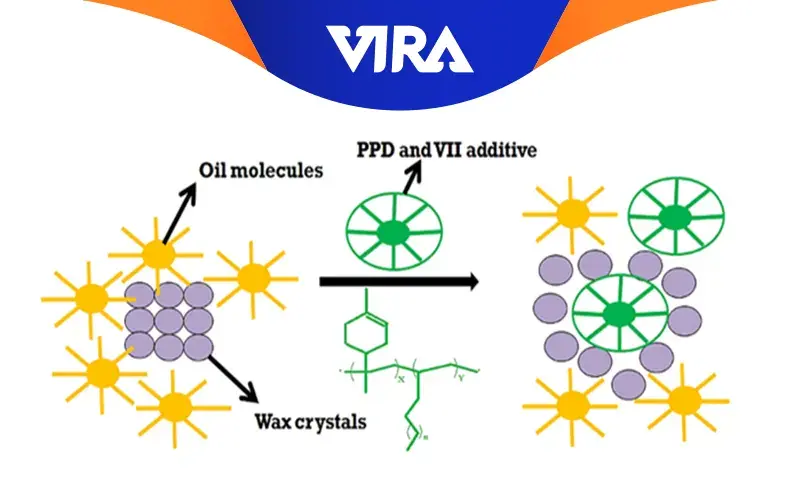
Pour Point Depressants
The pour point is the lowest temperature at which lubricating oil can remain fluid. At low temperatures, mineral oil’s wax crystals solidify, which obstructs the oil’s flow. To prevent this, pour point depressant additives are used to reduce the size of wax crystals, improving the oil’s flowability even at below-freezing temperatures. These additives work by reducing the interaction between wax crystals, enabling the oil to keep flowing at low temperatures.
Seal Swell Agents
Typically composed of organic phosphates, seal swell agents induce a minor swelling of elastomeric seals by reacting with them.
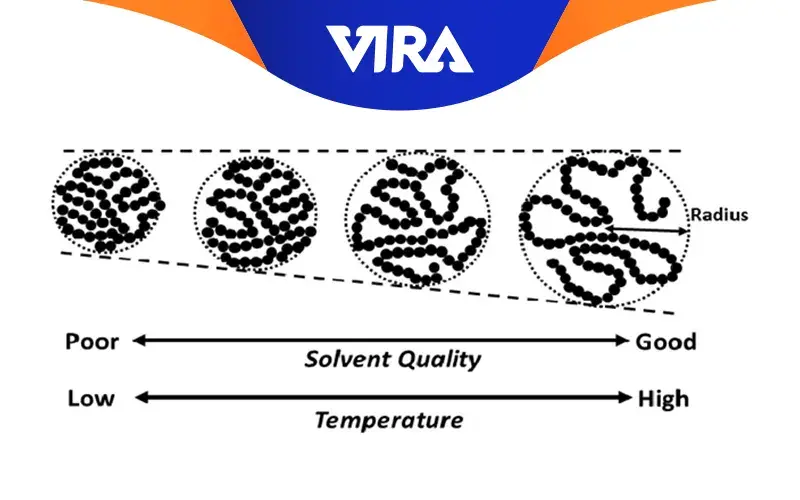
Viscosity Index Improvers
Viscosity index improvers are polymer additives that prevent lubricants from losing viscosity as temperature increases. These large additives are commonly used in multi-grade engine oils such as SAE 5W-30 or SAE 15W-40, and also in high-VI hydraulic and gear oils for better start-up and lubrication at low temperatures.
The viscosity index is used to measure the fluid’s change in viscosity concerning temperature. The higher the VI, the less significant the change in the lubricant’s viscosity as the temperature increases. These additives boost the viscosity of the fluid and are commonly used in multigrade engine oils, gear oils, automatic transmission fluids, power-steering fluids, greases, and some hydraulic fluids.
To explain how these additives function, imagine them as octopuses or coil springs that stay coiled up at low temperatures and have minimal effect on the oil viscosity. As the temperature rises, the additive or octopus extends its arms, making it larger and preventing the oil from thinning out excessively at high temperatures.
However, these additives also have some negative features, such as being susceptible to being chopped or cut up into small pieces by machine components (shearing forces) due to their large molecular weight. Gears, in particular, can be harsh on VI improver additives. Permanent shearing of VI improver additives can result in significant viscosity losses, which can be identified through oil analysis. Another form of viscosity loss occurs due to high shearing forces in frictional surfaces, such as journal bearings. The VI-improver additive may lose its uniform orientation and, as a result, some of its thickening ability. Nonetheless, this characteristic actually helps reduce fuel consumption. Several types of VI improvers are available, and high-quality VI improvers are less susceptible to permanent shear loss than their low-cost, low-quality counterparts.
VI improvers come in various types, and the most common ones are olefin copolymers. Although they have several disadvantages, VI improvers are crucial for lubricants to maintain their viscosity at high temperatures and reduce wear while improving fuel economy.
LUBRICANT PROTECTIVE ADDITIVES
They help mitigate the adverse impacts of the base oil or limit the alterations that take place over the lubricant’s lifespan.
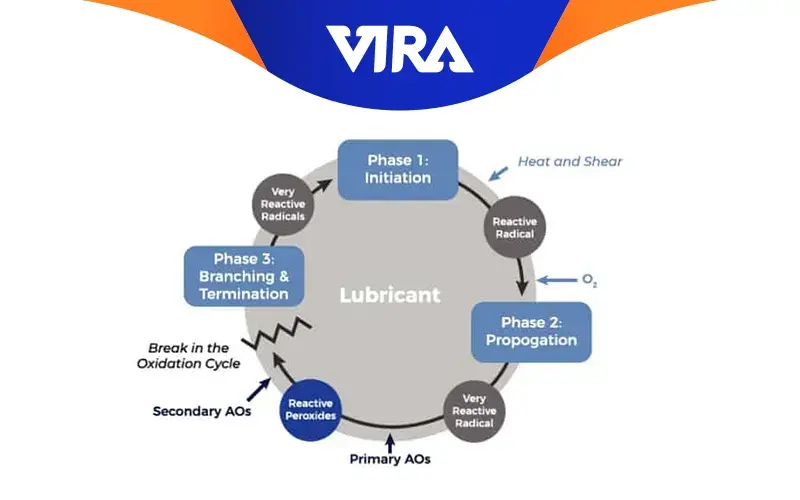
Antioxidants
Air and oxygen are major factors contributing to the degradation of base oil in lubricants. Oxidation of the oil is accelerated by the presence of water, wear metals, and other contaminants, as well as by rising temperatures. The oxygen in the air encourages the formation of acids, which can cause corrosion, as well as the creation of sludge that can increase viscosity and lead to surface deposits. To combat this degradation, lubricant formulas include antioxidants or oxidation inhibitors, which are considered one of the most essential and fundamental additives. These sacrificial additives enhance the lifespan of the lubricating oil by delaying the onset of oxidation, thus protecting the base oil. While performing their protective function, oxidation inhibitors are consumed and eventually degrade over time. They are commonly found in almost every lubricating oil and grease.
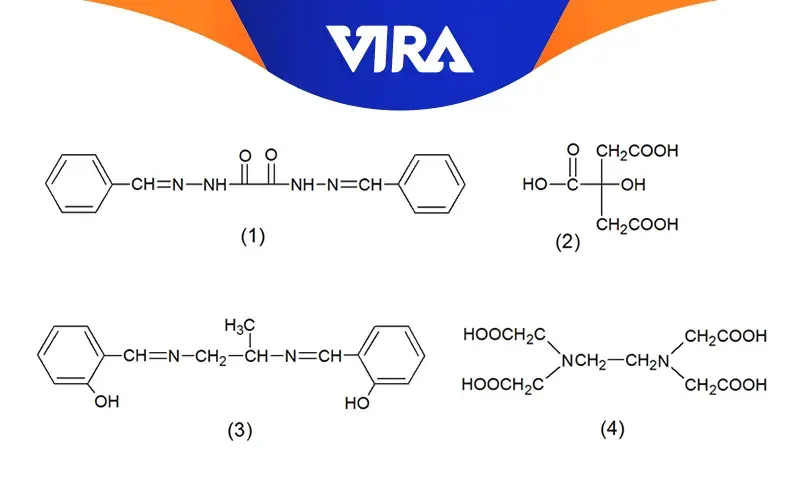
Metal Deactivators
An essential additive in lubricant formulas is metal deactivators, which are organic compounds that contain nitrogen or sulfur, including amines, sulfides, and phosphites. The primary function of these agents is to stabilize the lubricant by deactivating metal ions, achieved by forming an inactive protective layer on the metal surface.
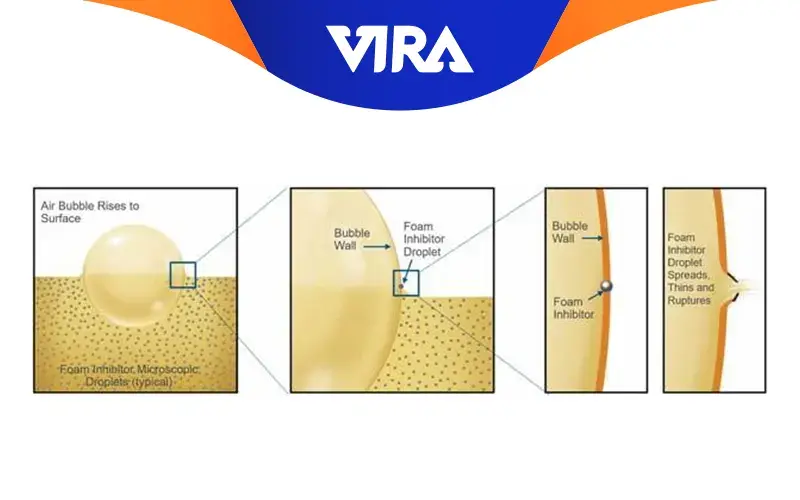
Anti-Foaming Additives
Anti-foaming agents, also known as foam inhibitors, are important additives in lubricant formulations. These additives are made up of silicone polymers and organic copolymers that reduce surface tension and prevent the formation of foam bubbles in the lubricant. By minimizing the amount of contact between the oil and air, they indirectly reduce the risk of oxidation. Some of these additives are oil-insoluble silicone materials that are finely dispersed in the lubricating oil. The concentration of these additives used in oil formulas is usually very low because adding too much of them can promote further foaming and air entrainment.
Other Lubricant additives
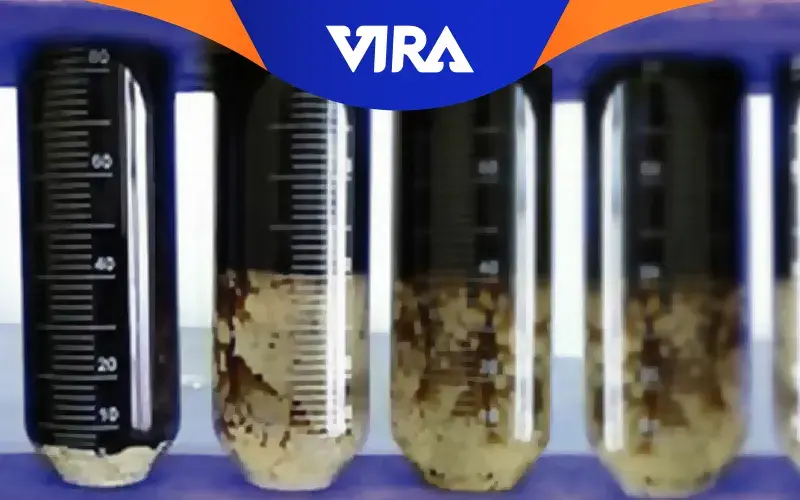
Demulsifiers
The function of demulsifier additives is to modify the interfacial tension of oil to prevent the creation of stable emulsions of oil and water. By doing so, they facilitate the separation of water from oil, allowing for easy drainage of free water in a reservoir. This is particularly crucial for lubricants that are exposed to steam or water.
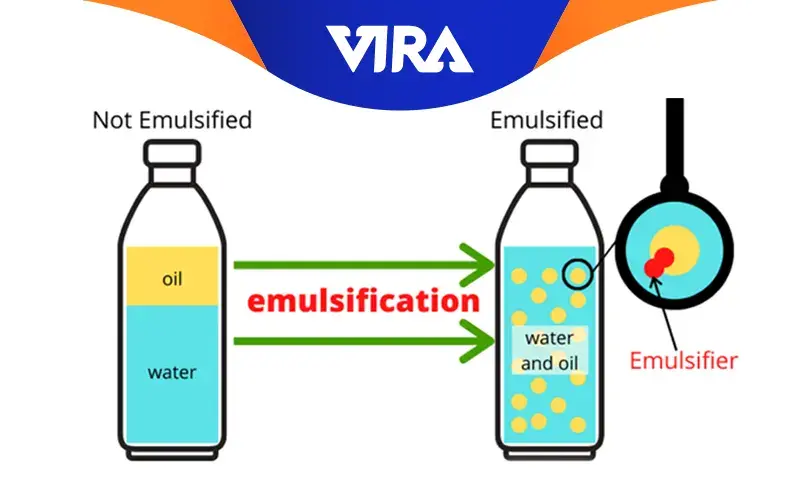
Emulsifiers
To create a stable oil-water emulsion in oil-water-based metal-working fluids and fire-resistant fluids, emulsifiers are added. These additives act as a binding agent between the oil and water, which would otherwise naturally separate from each other due to differences in specific gravity and interfacial tension.
Biocides Water-based lubricants often contain biocides as additives to prevent the growth of bacteria.
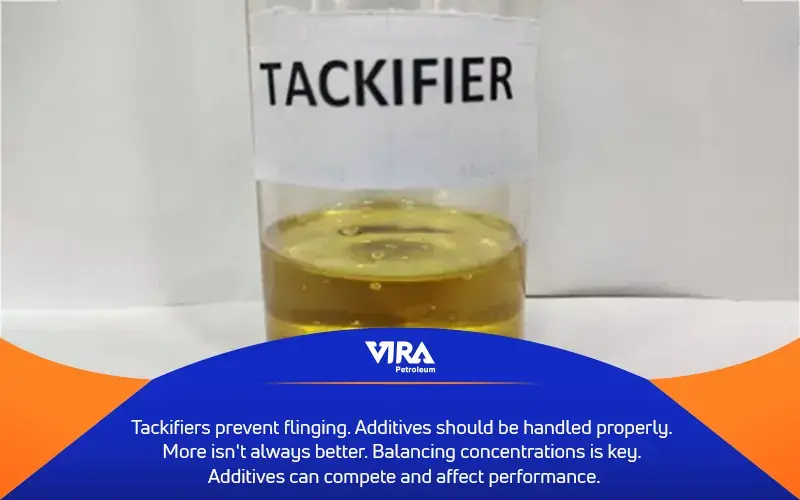
Tackifiers
Tackifiers are stringy materials used in some oils and greases to prevent the lubricant from flinging off the metal surface during rotational movement.
To be acceptable to blenders and end users alike, the additives must be capable of being handled in conventional blending equipment, stable in storage, free of offensive odor and be non toxic by normal industrial standards.
Since many are highly viscous materials, they are generally sold to the oil formulator as concentrated solutions in a base oil carrier.
A couple of key points about additives:
More additive is not always better. The old saying, “If a little bit of something is good, then more of the same is better,” is not necessarily true when using oil additives.
As more additive is blended into the oil, sometimes there isn’t any more benefit gained, and at times the performance actually deteriorates. In other cases, the performance of the additive doesn’t improve, but the duration of service does improve.
Increasing the percentage of a certain additive may improve one property of an oil while at the same time degrade another. When the specified concentrations of additives become unbalanced, overall oil quality can be affected.
Some additives compete with each other for the same space on a metal surface. If a high concentration of an anti-wear agent is added to the oil, the corrosion inhibitor may become less effective. The result may be an increase in corrosion-related problems.
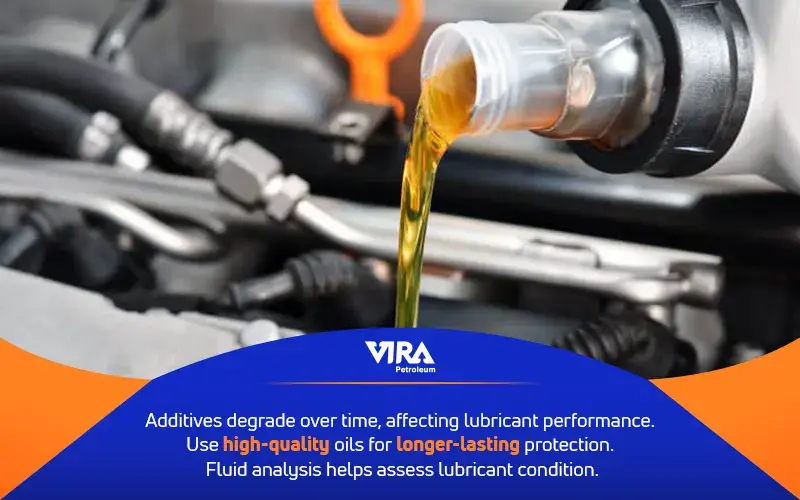
The Degradation of Oil Additives over Time
During the machinery lubrication process, a range of chemical processes takes place. Consequently, the additives present within the lubricating oil start to weaken over time.
Additives can degrade in multiple ways, such as breaking down, getting absorbed into metal or particle surfaces, or getting separated due to filtration. As a lubricant is used for a longer period, its additive package becomes less effective. This means that the lubricant can no longer perform as expected, resulting in an increase in viscosity, sludge formation, metal part corrosion, and increased equipment wear and tear.
The longevity of the additive package depends on the quality of the lubrication solution used. If low-quality oils are used, additive degradation can occur much sooner. It is advisable to use top-performing lubricants that can last longer, thereby increasing the overall performance and protection of machines or vehicles.
Several tests and analyses are available to help inspect lubricant performance and the effectiveness of additives used, including fluid analysis. By signing up for a fluid analysis program, lubricant samples can be taken and sent to a lab to learn more about the lubricant’s condition. For more information about fluid analysis, refer to our recently-published comprehensive guide.
Aftermarket Additives and Lubricant Conditioners: Proceed with Caution
While there are many aftermarket chemical additives and lubricant conditioners available, their effectiveness and safety are not always guaranteed. In fact, some manufacturers may make misleading claims about their products or fail to disclose negative side effects. As a result, it is important to exercise caution when considering their use.
Rule #1:
No amount of additives can convert an inferior lubricant into a premium product. It is not logical to attempt to overcome the poor lubricating qualities of a low-quality oil with a special additive.
Rule #2:
Some laboratory tests can be manipulated by certain additives, and field trials are necessary to fully assess the effectiveness of an additive.
Rule #3:
Base oils can only dissolve a certain amount of additive, so adding a supplemental additive to an already saturated oil may result in settling and ineffective performance.
Before using an aftermarket additive or lubricant conditioner, it is important to determine if there is a true lubrication problem, choose the right product, review factual field-test data, and consult an independent oil analysis laboratory.
While some supplemental lubricant additives may improve lubrication in certain applications, controversy surrounds their use, and the safety and effectiveness of each product should be carefully evaluated.
Conclusion
In conclusion, additives play a crucial role in lubricating oil formulations by enhancing their desirable properties and minimizing their undesirable ones. By adding new features to base oil, they ultimately improve the overall performance and reliability of lubricants. It is, therefore, vital to choose lubricants with high-quality additive packages to ensure optimal performance.
